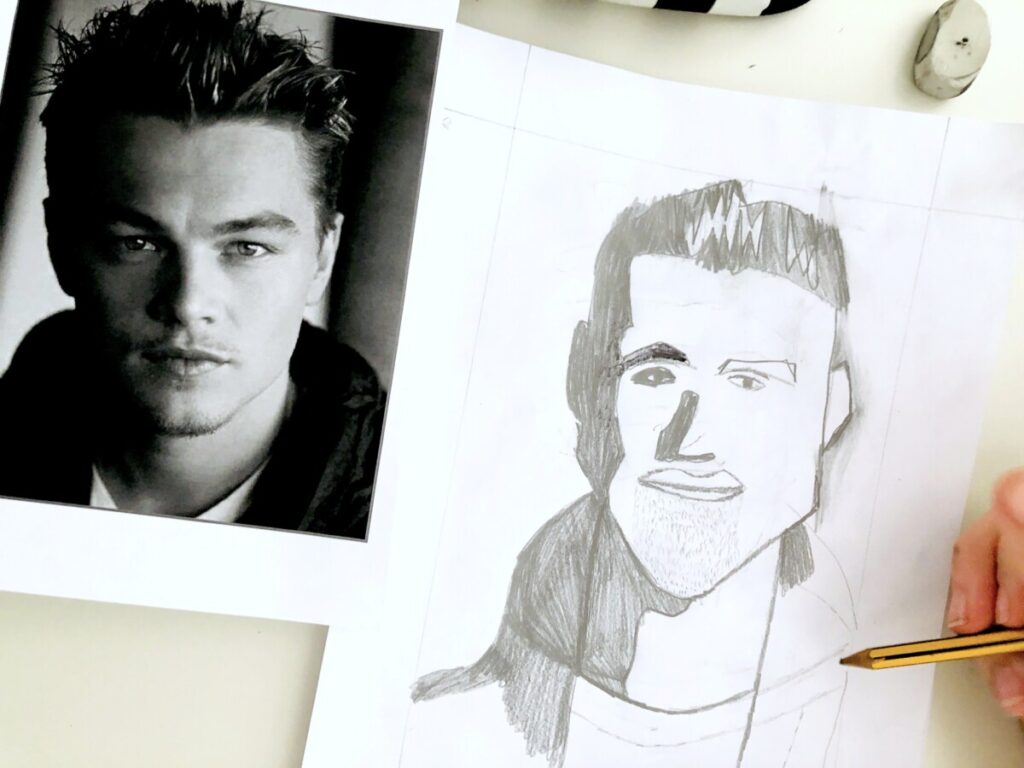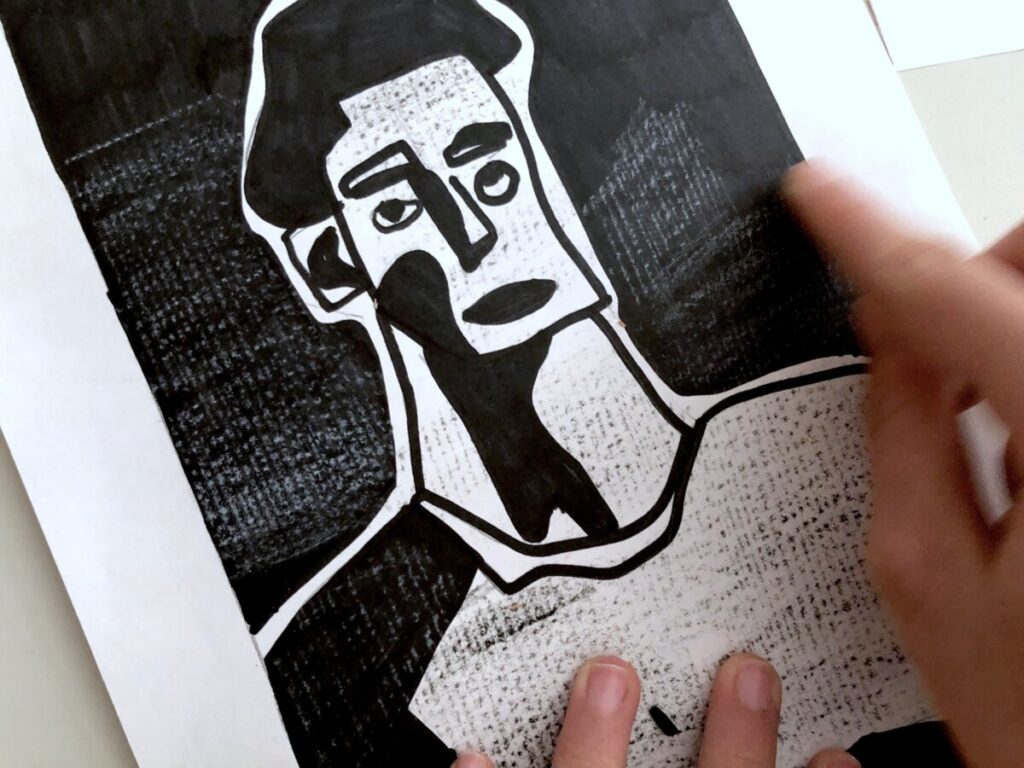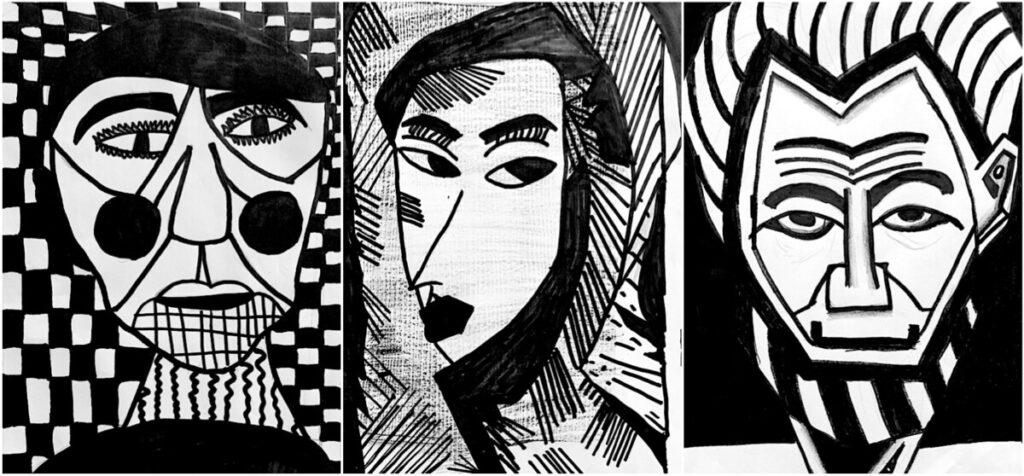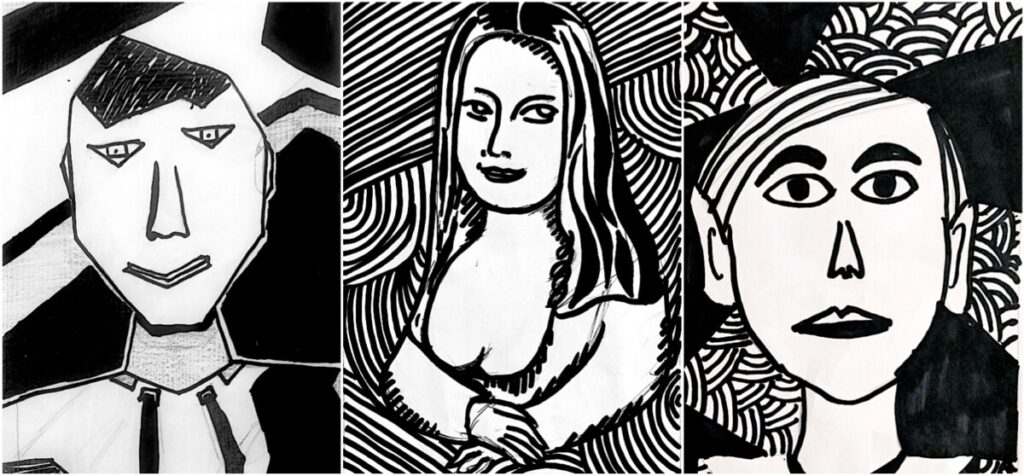In this particular year, when the art room is closed, we still tried to work in the classroom with the tools available and instead of printing, which we used to do, we recreated the characteristics of a woodcut in a black and white drawing. For this activity, we were inspired by the Woodcuts of German Expressionism, prints with wooden printing plates with angular and hard signs, figures with primitive and rough features, all limited to the maximum contrast between very few colors.
Each student was inspired by an image of a black and white portrait and copied the main lines of the face, the shadows, and the highlights of the photo on A4 paper. The image is not simply copied but is interpreted in an Expressionist sense, that is, the lines are simplified and made coarse and angular, and the shadows and highlights are reduced to black and white areas.
A final step to imitate the wood grain is done with the FROTTAGE, a technique of rubbing pastel on the paper placed on a rough surface, in this case, a wooden board with vertical grain. The frottage is done with a BLACK PENCIL on the white areas and with a WHITE PENCIL on the black areas.
under the drawing, you place a tablet with embossed veins and proceed with the FROTTAGE with black and white pencils.
Here below the students’ works:
























Brilliant. You come up with and share the best art projects Thanks from a busy art teacher
Love these !
LOVE your art projects!!! Wish I was a student in your class. THANK you for sharing your talent and the wonderful work that your students create.
Thank you Bernadete, I wish you were a student in my class, I feel your enthusiasm and love for Art! 😉
Can you tell me the best and easiest, and cheapest (!) wood to purchase for this project? Also, what drawing paper do you use?
I found a piece of wood in my garage, the wood must be rough with the veins in evidence, a simple piece of old wooden plank it’s good. The purpose of wood is to complete the drawing with frottage in order to imitate the wood grain.